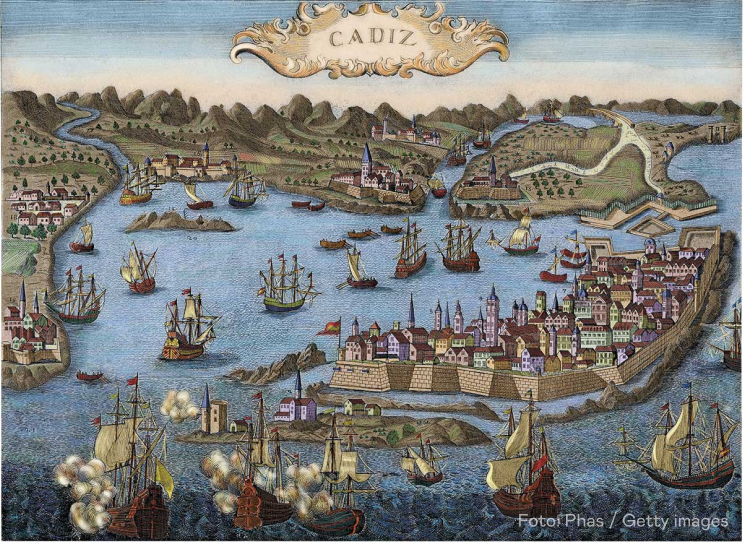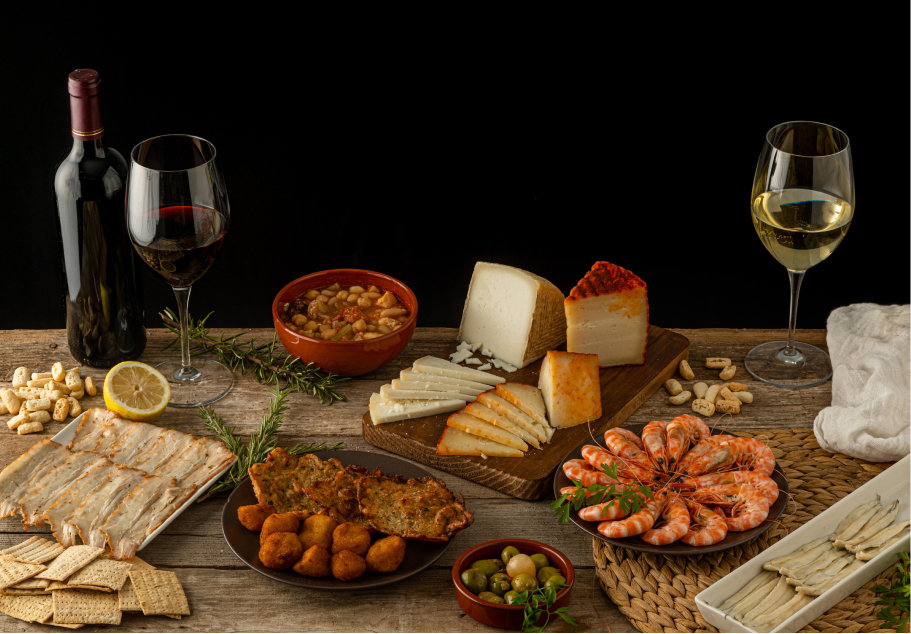Three thousand years
of tasty legacy
Cádiz is a province which has got three thousand years of history. There are multiple existing traces of various civilizations which have lived there. Phoenicians, Romans, Goths, Muslims, Jews and Christians, have left their mark on its gastronomic culture. Its history was born around the year 1100 B.C. and the capital founded back then is known as the oldest continuously inhabited city of the West. The prestigious strategic location, a door for communication between the Mediterranean and the Atlantic, made and is still making this province a territory of great commercial interest. Bright, savoury and cheerful land – basically unique!
The Phoenicians occupied the province of Cádiz due to its excellent geographical position for their commercial trips. These lands started to come alive, and their population moved towards the sea and fishery. And so, the foundations were established for the local products: the possibility of elaborating salted fish was discovered with the salt production, which was a clear solution to a necessity. This way of fish preserving has endured in time, giving the salted fish from Cádiz its own footprint and a great prestige on the markets.

Centuries later, in the classical era, these lands were occupied by the Romans after their arrival to the Iberian Peninsula. The province was already rich, quite populated and was renowned by its expert navigators and merchants. But it was in that roman period when it reached its great heyday. It even had its own currency for trade and strong trade relations, especially with Rome. Its fish and derivatives experienced the time of splendour and recognition with a very vivid example – garum, favourite seasoning of the time, elaborated from fish entrails, which gave great fame to the region.
Fishing techniques got more advanced, and one in particular stood out – almadraba. Meanwhile, the production of vines, olives and wheat had also began, giving rise to first wines, oil and bread from Cádiz. There is also data that acknowledge this era as the beginning of the first cheese productions in the Bay of Cádiz. However, with the decline of the Roman Empire, Cádiz also fell into a time of decay and abandonment.
The arrival of the Arab civilization in the province brought delicacy and a sybaritic touch to its products and gastronomy. Muslims introduced spices to the cuisine and began the development of the famous Andalusian pastry. The invention of one of the gastronomic jewels of the province owes much this historical moment: Alfajores de Medina, a very aromatic sweet made with almonds, honey and spices. Cádiz was a Muslim territory for six centuries.
In the 13th century, when it was reconquered by Christian troops, Cádiz joined the Kingdom of Castile. Later, with the conquest of America, Cádiz experienced a before and an after in its history and in the development of its gastronomy.
Christopher Columbus left its ports on some of his trips towards America, and so Cádiz city had a commercial monopoly with the Indies. It was the headquarters of the House of Trade and Spanish treasure fleet in the 18th century. The city and other towns in its surroundings such as Sanlúcar de Barrameda and El Puerto de Santa María, incessantly benefited from a great commercial activity with the new continent. This is how some of the ingredients of Andalusian cuisine arrived. Essential ever since, these are potatoes, tomatoes, cocoa, corn, pumpkin, vanilla, among many others.

The development of Cádiz during the modern and contemporary era has been continuous. To highlight some of historic milestones for its agri-food culture, let’s name some of them

In the 18th century, the production of Sherry wines was consolidated by the current criaderas and soleras method, thus becoming one of the most appreciated wines in the world. From that moment, the influences on Cádiz gastronomy began to arrive mainly from France and the United Kingdom, imitating many of the dishes and desserts of these countries.
According to studies carried out by the gastronomist Manuel Ruiz Torres, in the 19th century there were numerous places in the Bay of Cádiz where fish was fried, one of the most emblematic dishes of local cuisine: process of frying bits of flour-coated fish in olive oil at a high temperature.
The 20th century brought as a novelty the development of an important canning activity based on blue fish in the coastal area of Cádiz. It should also be noted that at the end of this century, tapas as an Andalusian style of informal food and very present in the gastronomy of Cádiz, became a culinary trend that was highly appreciated in the rest of the world.

